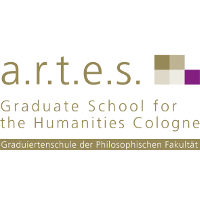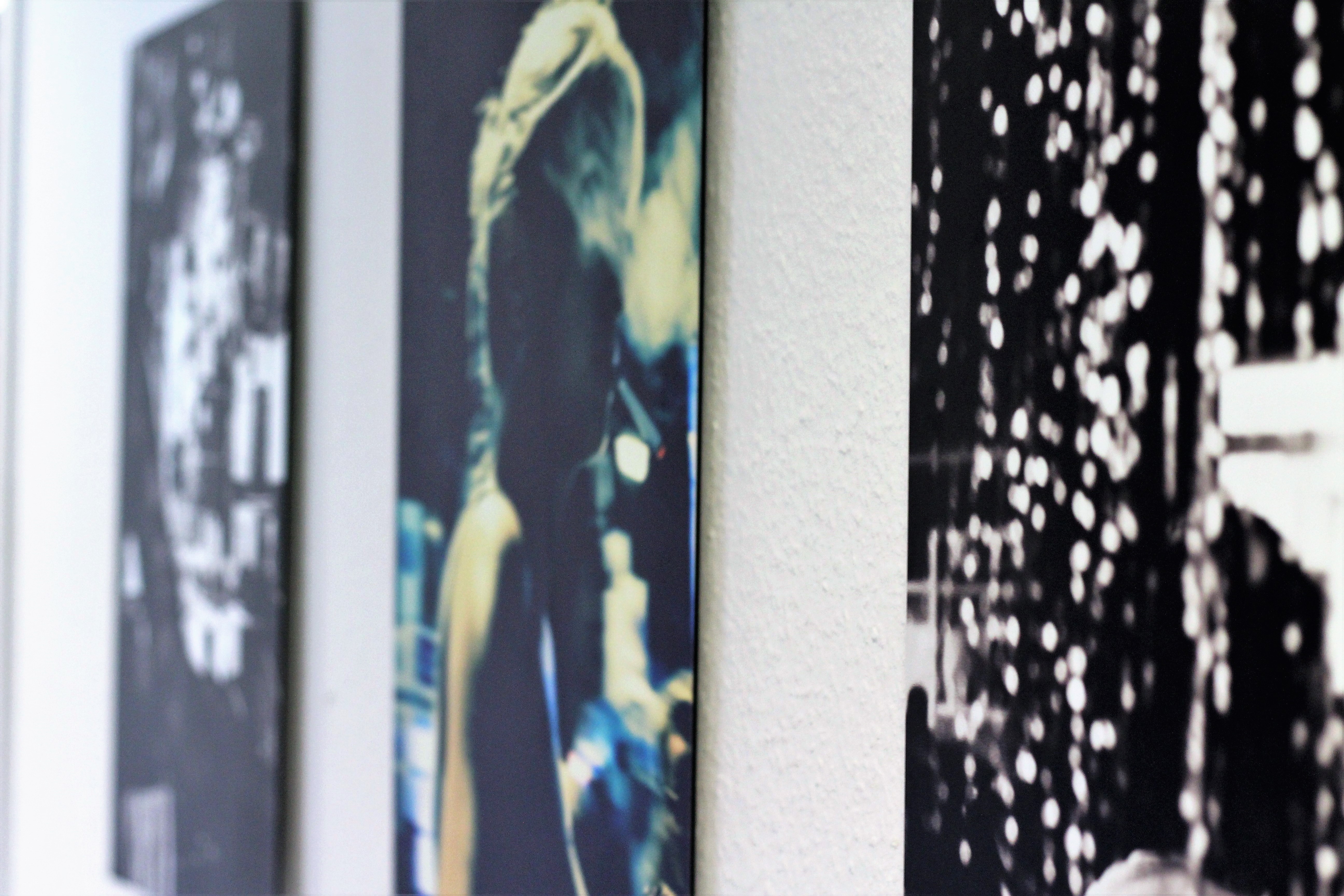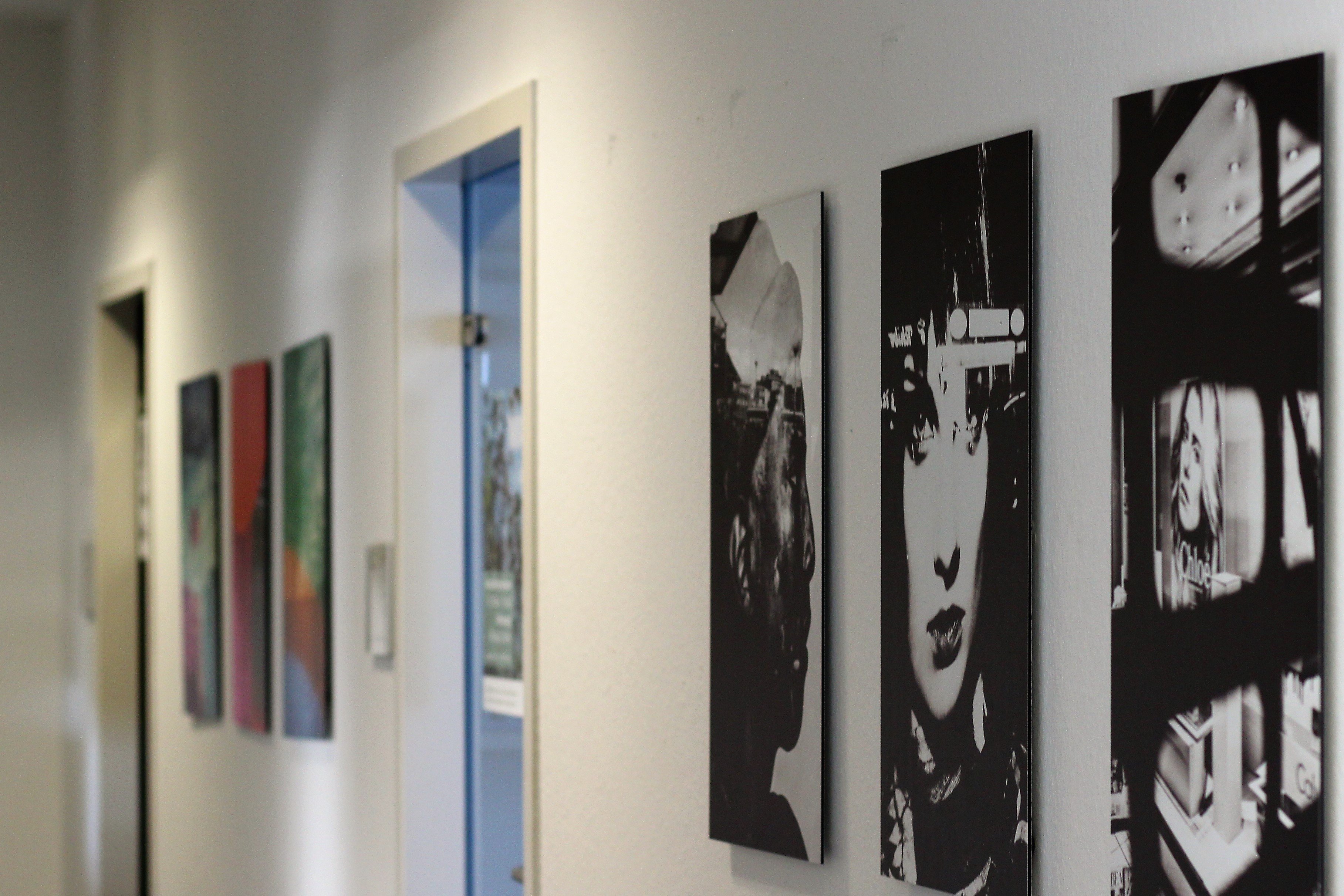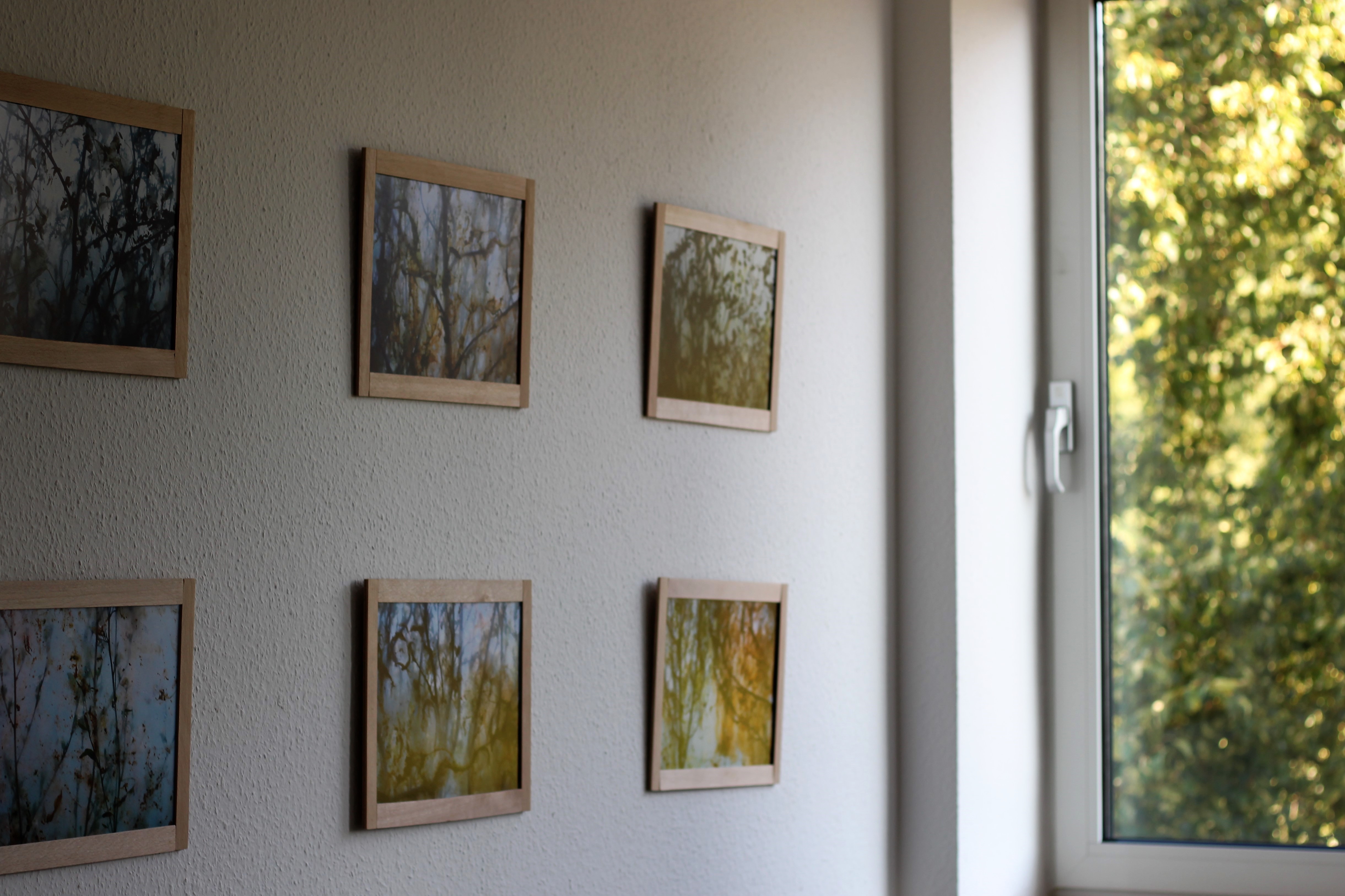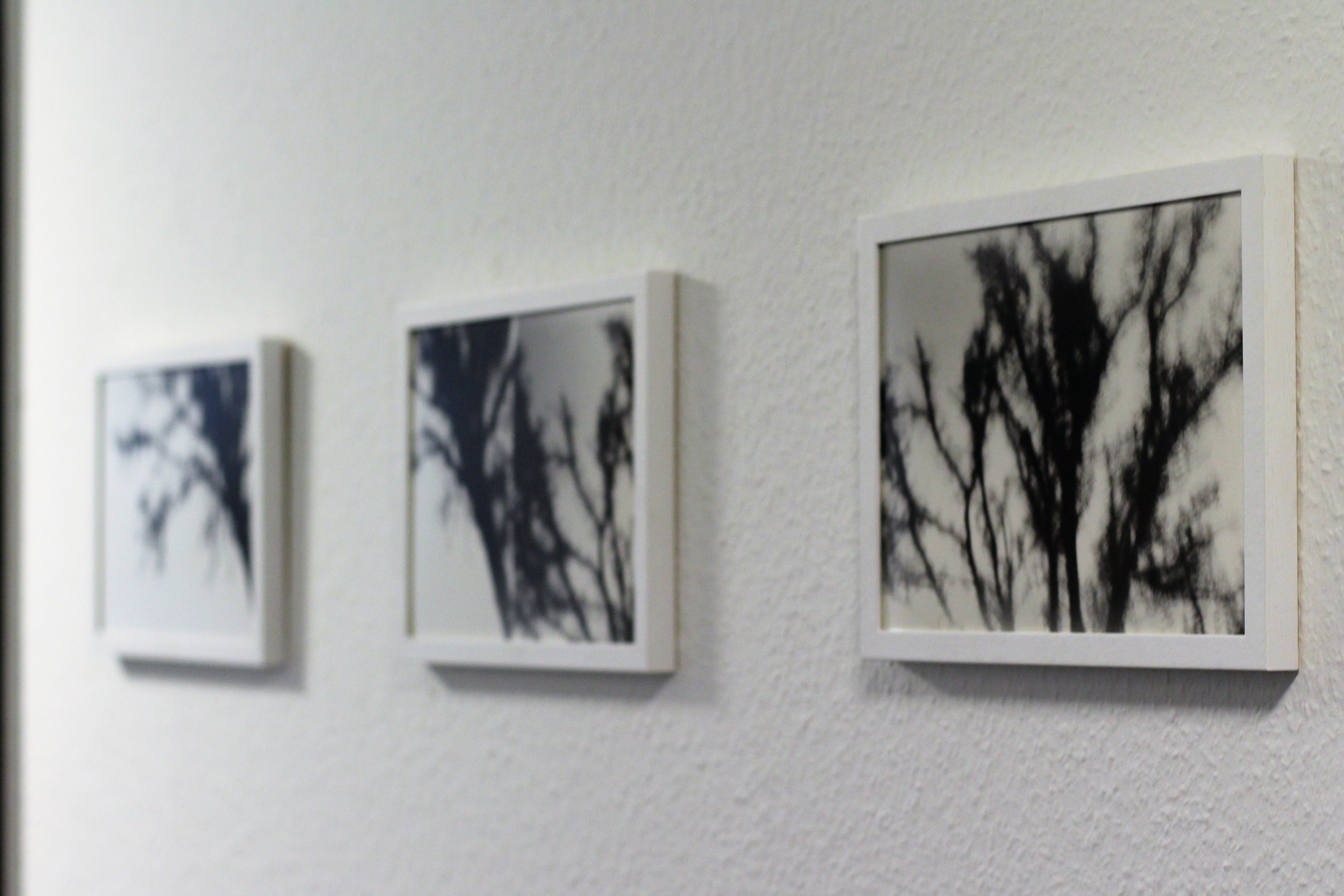“Joining the a.r.t.e.s. kunstfenster is a great opportunity”
The a.r.t.e.s. kunstfenster team on the experience of curating the exhibition MICROCOSMS
von Alessa Hübner
In summer 2018 the a.r.t.e.s. kunstfenster presented the exhibition MICROCOSMS in the building of the a.r.t.e.s. Graduate School. The exhibition focused on the concepts microcosm and macrocosm, which stand in a relationship of mutual reference – they reflect the whole through its parts, and vice versa. We spoke to the current kunstfenster team, consisting of Elio Antonucci, Christina Rath, Claudia Rizzo and Caterina Ventura, about their experiences of participating in the a.r.t.e.s. kunstfenster and curating MICROCOSMS.
a.r.t.e.s. Graduate School for the Humanities Cologne: Dear Caterina, Claudia, Elio and Tina – you ’ve recently organised the exhibition MICROCOSMS in the premises of the a.r.t.e.s. Graduate School. Could you give us a short explanation of the exhibition’s topic?
a.r.t.e.s. kunstfenster team: The topic of this year’s kunstfenster exhibition is the analogy between the world as a whole and its individual units, microcosms. Microcosm and macrocosm stand in a relationship of mutual reference; they reflect the whole through its parts, and vice versa. One of the central principles of the relation between these two concepts is a similarity in both pattern and structure that can be found in nature: human beings and the universe. By studying the characteristics of one of these two, it is thought to be possible to improve our understanding of the other.
How did you approach this in practice?
Inspired by our concept ‘microcosms’, the exhibition was intended as a multimedia platform which celebrates the numerous artistic possibilities of representing uniform but diverse worlds. In the exhibition, photographs and installations came to stand for four small-scale models of the world: nature, femininity, city life and language. Each topic was intended to offer a different approach to address the challenging tension between micro- and macrocosm. At the end, we wanted the experience to be about embracing a unique and ordered whole, a microcosm in itself.
Did you get any feedback from visitors?
We did! It was interesting to see what people respond to and what they don’t. As a curator you function as a facilitator for both the audience and the artists. Overall, we had the impression that the a.r.t.e.s. community enjoyed the exhibition (and the wine). For many visitors, the most interesting part of the exhibition was Filippo’s talk on his photographic imprinting process.
Would you please tell us more about the artists and the works they exhibited in MICROCOSMS?
We selected four artists to participate in the MICROCOSMS exhibition: Filippo Valtore’s works Planta Rei I & Planta Rei II are a reflection on light, plant life, and on the conditions of a possible relationship between humanity and nature. His photographs aim to evoke the process of plants’ fluorescence, replicating it by using a similar process of photographic imprinting. Photography here turns into an opportunity for a new look at the cosmos of nature and a renewal of its mysteries. The exhibited photographs and short films of Claudia Difra offer an opportunity to approach the relationship between micro- and macrocosm from another perspective: Her work depicts woman as a microcosm of the larger social body encompassing it and, along these lines, she raises questions about the relationship between women and society as well as contradicting prominent ideas of womanhood. By exhibiting his projects Urban People, Desire for Beauty and Urban Abstracts, Sven Hoffmann displays his vision of city dwellers and urban life. Sven’s particular use of colors and shapes not only embraces the complexity of city life, but his urban expressions are also microcosmic of society. The category city life is further enriched by the video installation On Survival Mode of Per Mertens who manipulates video games to place the spectator in distorted post-apocalyptic scenarios. He explores the dimension of the city as a macrocosm in relation to the singular inhabitant and enlarges the limits of our perception through the means of modern technology. Finally, the kunstfenster team presented a linguistic experiment, focusing on language as a microcosm. The audio installation includes samples of dialects and minority languages from around the world and invites the listener to experience language varieties as an expression of personal and cultural identity.
How did you choose those artists and how would you describe the cooperation with them?
MICROCOSMS was a collaborative effort, which included four different artists to showcase their art at the same event. Once we felt confident with our concept ‘microcosms’, we reached out and made contact. We knew from the start that two Italian artists would participate in the exhibition, so we thought it might be nice to include two local artists as well. Therefore, we did some research into artists in Cologne and asked whether they would be interested in taking part in our exhibition. In addition, we tried to include different mediums so that the exhibition would feature photographs, video installations and other types of visual arts. For us, working with Claudia Difra, Sven Hoffmann, Per Mertens and Filippo Valtore and thereby reconciling different personalities and artistic endeavors resulted in a more diverse and well-rounded display. They helped us to envision how they want the visitors to view and interact with the different floors and rooms and together we constructed a final layout that fulfilled this purpose. We also learned a lot about how to get the artwork mounted and situated properly. Therefore, the whole exhibition was planned in close cooperation with the exhibiting artists.
In what way did MICROCOSMS realize the aspiration of the a.r.t.e.s. kunstfenster project of creating a discourse between art and science?
One of the defining characteristics of the a.r.t.e.s. kunstfenster is dialogue. In our case, the result was a lively exchange between artists, doctoral students, scholars, curators and art enthusiasts on both an interdisciplinary and an international basis. What we can learn from this is that art and science do overlap. With regard to our concept ‘microcosms’, it is essential to see that by moving from specific observations to broader generalizations and theories, as well as from the more general to the more specific, researchers replicate the mutual movements of microcosm and macrocosm. In the same way, we can think about artists as attempting to represent reality through its fragmentation, offering their particular view on the world. The works exhibited in MICROCOSMS embrace these connections and contradictions, opening a dialogue between artists, scientists and audiences. Moving from spaces of contemplation and reception to moments of excitement and animation, our four artists not only blurred borders but guided us through negotiations between the specificity of the microcosm and its abstraction into an ordered whole. Ultimately, they drew our attention to two intertwined forms of human expression: art and science.
Why did you decide to participate in the a.r.t.e.s. kunstfenster and how would you retrospectively describe the experience?
All of us enjoy art but we had never curated an art exhibition before. I guess one could say that we were curious and wanted to learn. The truth is, we started out with great energy, but only a general idea of what we were looking for and what we wanted to organize. Organizing this exhibition (on a budget!) therefore turned out to be a learning process, including all the speed bumps you’re supposed to hit on the way. Being part of the kunstfenster project requires you to work with a team, solve problems effectively, plan events and also interact with artists, a.r.t.e.s. staff and alumni. With different personalities and subject areas clashing, it can get a bit tricky sometimes to come up with decisions. At the same time, we were happy with what our team achieved because there were four heads sharing ideas and looking for solutions. We tried to distribute the workload in a way that every team member could showcase their various strengths, and then team up to tackle areas where we had to support each other.
Which impressions did the exhibition and, more generally, the time spent with the a.r.t.e.s. kunstfenster leave on you?
Joining the a.r.t.e.s. kunstfenster is a great opportunity and the time you invest is worth the benefits you can receive: new friendships, the level of involvement at a.r.t.e.s., the expansion of your professional networks, and of course the amount of fun you can have as a team. In addition to that, you’ll gain practical experience and learn to use skills like project management, event planning, and fundraising in a safe environment. Another positive aspect of being involved in the kunstfenster team is that you get to give back to the a.r.t.e.s. community through fun events – such as the Christmas Party and the Vernissage. Joining the kunstfenster team is not only a good way to strengthen the graduate student community and helps to connect doctoral students across disciplines, but it has also given us the opportunity to connect with fun, talented and creative individuals. It was a lot of work, but it was also very rewarding. Final impression? The time we spent organizing MICROCOSMS was definitely worth it!
What advice would you give future members in the kunstfenster project?
Get in touch with former kunstfenster members if you need some advice. We are happy to help!
Thank you so much for these interesting insights into your experiences with the a.r.t.e.s. kunstfenster. Is there anything left you would like to add?
We want to thank the a.r.t.e.s. Graduate School and our sponsors for supporting MICROCOSMS. Special thanks goes to Julia Maxelon who has been an important part of this journey!
We would like to thank the kunstfenster team, namely Elio Antonucci, Tina Rath, Claudia Rizzo and Caterina Ventura, for their engagement in the project and for the interesting interview!
